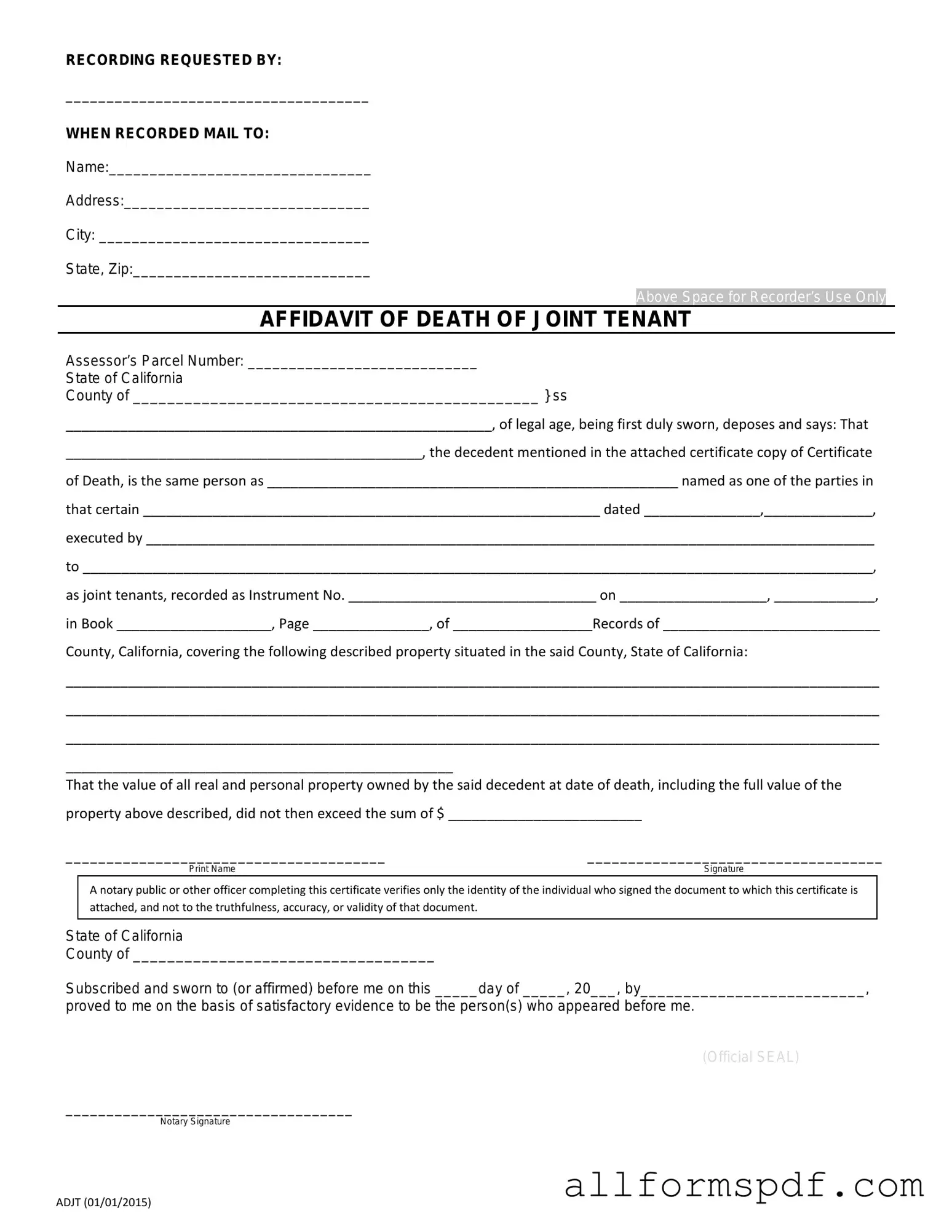Filling out the California Death of a Joint Tenant Affidavit form can be a straightforward process, but many individuals make common mistakes that can lead to delays or complications. One frequent error is failing to provide accurate information about the deceased joint tenant. It is essential to ensure that the name, date of death, and other identifying details are correct. Any discrepancies can create confusion and may require additional documentation.
Another mistake often made involves neglecting to include the correct property description. The affidavit should clearly describe the property in question, including the address and any relevant legal descriptions. Omitting this information or providing vague details can result in issues with property transfer and ownership verification.
Additionally, some individuals overlook the requirement for notarization. The affidavit must be signed in the presence of a notary public. Without this step, the document may be considered invalid, leading to potential legal challenges down the line. Ensuring that the affidavit is properly notarized is crucial for its acceptance.
Many people also fail to include all necessary supporting documents. Alongside the affidavit, it is often required to provide a certified copy of the death certificate. Neglecting to attach this document can cause delays in processing the affidavit and may hinder the transfer of property ownership.
Another common oversight is not understanding the implications of the affidavit. Some individuals may not realize that by completing this form, they are effectively transferring ownership of the property. It is vital to consider the implications of this transfer and ensure that all parties involved are aware and in agreement.
Lastly, individuals sometimes misinterpret the timeline for filing the affidavit. There may be specific time frames within which the affidavit must be submitted following the death of a joint tenant. Missing these deadlines can complicate the process and may lead to additional legal hurdles. Staying informed about these timelines is essential for a smooth transition of property ownership.
